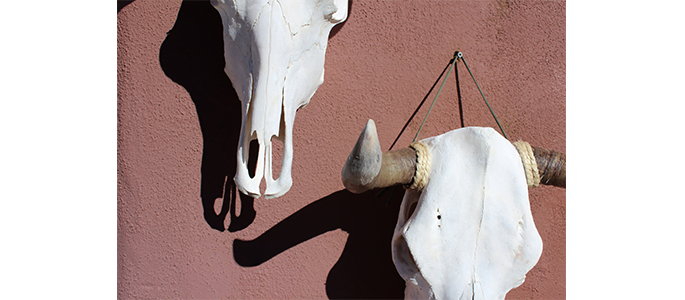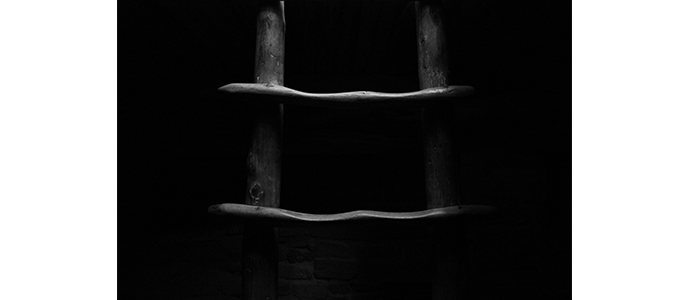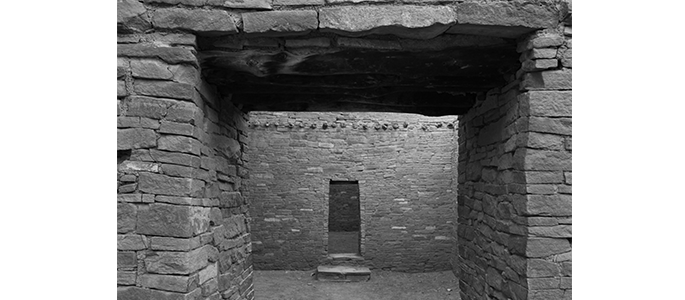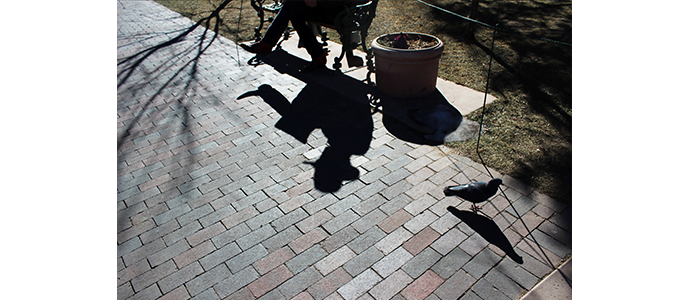By Emily Case
Emily Case of Gibbon, Neb., was a senior English/visual media major when she wrote this piece in the spring of 2014.
In April I gave an Academic Showcase Day lecture titled “Shadows of the Past: Exploring the Essence of the American Southwest through Documentary Photography.” The presentation grew from a January-term (J-Term) trip I took to the American Southwest in January 2014 to photograph landmarks of the area. The goal was to illustrating ancient cultures in our images.
It was an incredible opportunity to analyze my own photography, research the history of the Pueblo tribe and reflect on the importance of the J-term trip.
Included here are a few of my photographs and points from the presentation.

The skulls shown here have grown to be a symbol of the Southwest. They have inspired artists such as Georgia O’Keeffe, who produced a series of paintings of skulls with flowers that depict the beauty yet severity of death.
To me, they signify the struggle of the natural landscape and indigenous peoples against European supremacy. The skulls are pinned to the wall against their will, put on display for the sake of commercialism. The eyeholes stare menacingly yet helplessly, powerless to their fate. The shadows cast evoke a sense of time, bringing the viewer back to an era where these beasts roamed free and Native Americans lived without any knowledge of white men.

This ladder, to me, signifies the very roots of Pueblo beliefs by illustrating this dim light in their creation story. The light leads the eye upwards and out of the earth to the land above, which the sisters in the creation story eventually found thanks to Badger and Locust. And this kiva, this place in the ground, is where modern Pueblo return to regularly. They come back to their beginnings.

This image was taken in Pueblo Bonito; to me, the room framed within a door frame signifies generations. The stone gives a feeling of strong heritage and foundation, the proud history of these peoples. The lines of the thick walls in the foreground pull you back into the small, ancient room, just as the experience of exploring these ruins pulled me back to a time where a culture other than ours defined the era in the Southwest.
The dark and light tones also depict the history of the Pueblo peoples– the light of their architectural and artistic achievements with the darkness brought by events such as the Spanish Colonial occupation. In a sense, this image encompasses their entire history, and the depth of the image illustrates this point well.

This final image was taken at the Santa Fe Plaza park… The man seems to act as if to isolate himself from nature – the pigeon and the tree surrounding him – instead of interacting with it. And the viewer is confronted again with shadows cast by the tree, the man, and the pigeon. The tree, especially, is reminiscent of the past and the trees that were so sacred to the ancestral Pueblos. Now nothing is visible but the shadow.
Although this picture is taken in a contemporary setting, it still feels so much like it echoes the past with its lack of contrast and emphasis on these shadows. We still see so much of the past in Santa Fe today; it is as inevitable as the fall of their ancient civilization.
Not only was the J-term trip a unique experience, but so was the Academic Showcase Day presentation. Preparing the presentation gave me an opportunity to do self-directed research and analysis into something I wouldn’t have been able to do in a classroom. It definitely awakened my interest in visual analysis, something I hope to delve more fully into in the future.

